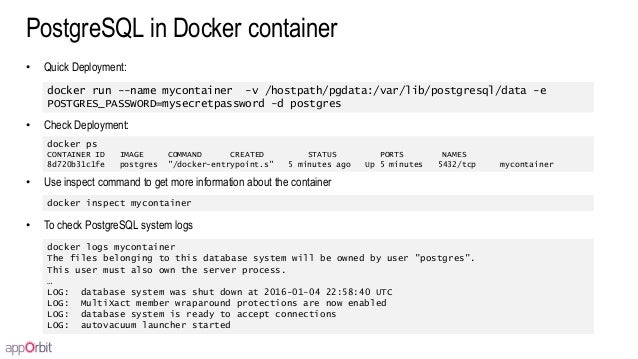Ps To Mounting Database In Server 2016
Use the Mount-Database cmdlet to mount mailbox databases on Exchange servers. The cmdlet mounts the database only if the Microsoft Exchange Information Store service and the Microsoft Exchange Replication service are running.
For information about the parameter sets in the Syntax section below, see Exchange cmdlet syntax (https://technet.microsoft.com/library/bb123552.aspx).
Syntax
New Mailbox Database using PowerShell. In this post I will create a new Mailbox Database for Exchange 2016 using PowerShell. To get started we need to launch the Exchange PowerShell console and the run the following cmdlet. Next is to mount the newly created DB. Lets verify that DB and Logs is created in the correct location.
Description
You need to be assigned permissions before you can run this cmdlet. Although this topic lists all parameters for the cmdlet, you may not have access to some parameters if they're not included in the permissions assigned to you. To find the permissions required to run any cmdlet or parameter in your organization, see Find the permissions required to run any Exchange cmdlet (https://technet.microsoft.com/library/mt432940.aspx).
Examples
-------------------------- Example 1 --------------------------
This example mounts the database MyDatabase.

Parameters
The AcceptDataLoss switch specifies that you accept the data loss caused by missing committed transaction log files without asking for confirmation. Hunting mod skyrim xbox one. You don't need to specify a value with this switch.
| Type: | SwitchParameter |
| Position: | Named |
| Default value: | None |
| Accept pipeline input: | False |
| Accept wildcard characters: | False |
| Applies to: | Exchange Server 2010, Exchange Server 2013, Exchange Server 2016, Exchange Server 2019 |
The Confirm switch specifies whether to show or hide the confirmation prompt. How this switch affects the cmdlet depends on if the cmdlet requires confirmation before proceeding.
Destructive cmdlets (for example, Remove-* cmdlets) have a built-in pause that forces you to acknowledge the command before proceeding. For these cmdlets, you can skip the confirmation prompt by using this exact syntax: -Confirm:$false.
Most other cmdlets (for example, New-* and Set-* cmdlets) don't have a built-in pause. For these cmdlets, specifying the Confirm switch without a value introduces a pause that forces you acknowledge the command before proceeding.
| Type: | SwitchParameter |
| Aliases: | cf |
| Position: | Named |
| Default value: | None |
| Accept pipeline input: | False |
| Accept wildcard characters: | False |
| Applies to: | Exchange Server 2010, Exchange Server 2013, Exchange Server 2016, Exchange Server 2019 |
The DomainController parameter specifies the domain controller that's used by this cmdlet to read data from or write data to Active Directory. You identify the domain controller by its fully qualified domain name (FQDN). For example, dc01.contoso.com.
| Type: | Fqdn |
| Position: | Named |
| Default value: | None |
| Accept pipeline input: | False |
| Accept wildcard characters: | False |
| Applies to: | Exchange Server 2010, Exchange Server 2013, Exchange Server 2016, Exchange Server 2019 |
The Force switch specifies whether to suppress warning or confirmation messages. You can use this switch to run tasks programmatically where prompting for administrative input is inappropriate. You don't need to specify a value with this switch.
Use this parameter to mount an empty database, or to override any errors or warnings that are encountered during the database mount.
| Type: | SwitchParameter |
| Position: | Named |
| Default value: | None |
| Accept pipeline input: | False |
| Accept wildcard characters: | False |
| Applies to: | Exchange Server 2010, Exchange Server 2013, Exchange Server 2016, Exchange Server 2019 |
The Identity parameter specifies mailbox database that you want to mount. You can use any value that uniquely identifies the database. For example:

Name
Distinguished name (DN)
GUID
Ps To Mounting Database In Server 2016 Pdf
| Type: | DatabaseIdParameter |
| Position: | 1 |
| Default value: | None |
| Accept pipeline input: | True |
| Accept wildcard characters: | False |
| Applies to: | Exchange Server 2010, Exchange Server 2013, Exchange Server 2016, Exchange Server 2019 |

The NewCapacity switch specifies that you want to trigger the forced creation of a database only if all copies of the database don't have an .edb file. You don't need to specify a value with this switch.
| Type: | SwitchParameter |
| Position: | Named |
| Default value: | None |
| Accept pipeline input: | False |
| Accept wildcard characters: | False |
| Applies to: | Exchange Server 2016, Exchange Server 2019 |
The WhatIf switch simulates the actions of the command. You can use this switch to view the changes that would occur without actually applying those changes. You don't need to specify a value with this switch.
| Type: | SwitchParameter |
| Aliases: | wi |
| Position: | Named |
| Default value: | None |
| Accept pipeline input: | False |
| Accept wildcard characters: | False |
| Applies to: | Exchange Server 2010, Exchange Server 2013, Exchange Server 2016, Exchange Server 2019 |
Ps To Mounting Database In Server 2016 Download
Inputs
To see the input types that this cmdlet accepts, see Cmdlet Input and Output Types (https://go.microsoft.com/fwlink/p/?linkId=616387). If the Input Type field for a cmdlet is blank, the cmdlet doesn't accept input data.
Outputs
To see the return types, which are also known as output types, that this cmdlet accepts, see Cmdlet Input and Output Types (https://go.microsoft.com/fwlink/p/?linkId=616387). If the Output Type field is blank, the cmdlet doesn't return data.
Related Links
Comments are closed.